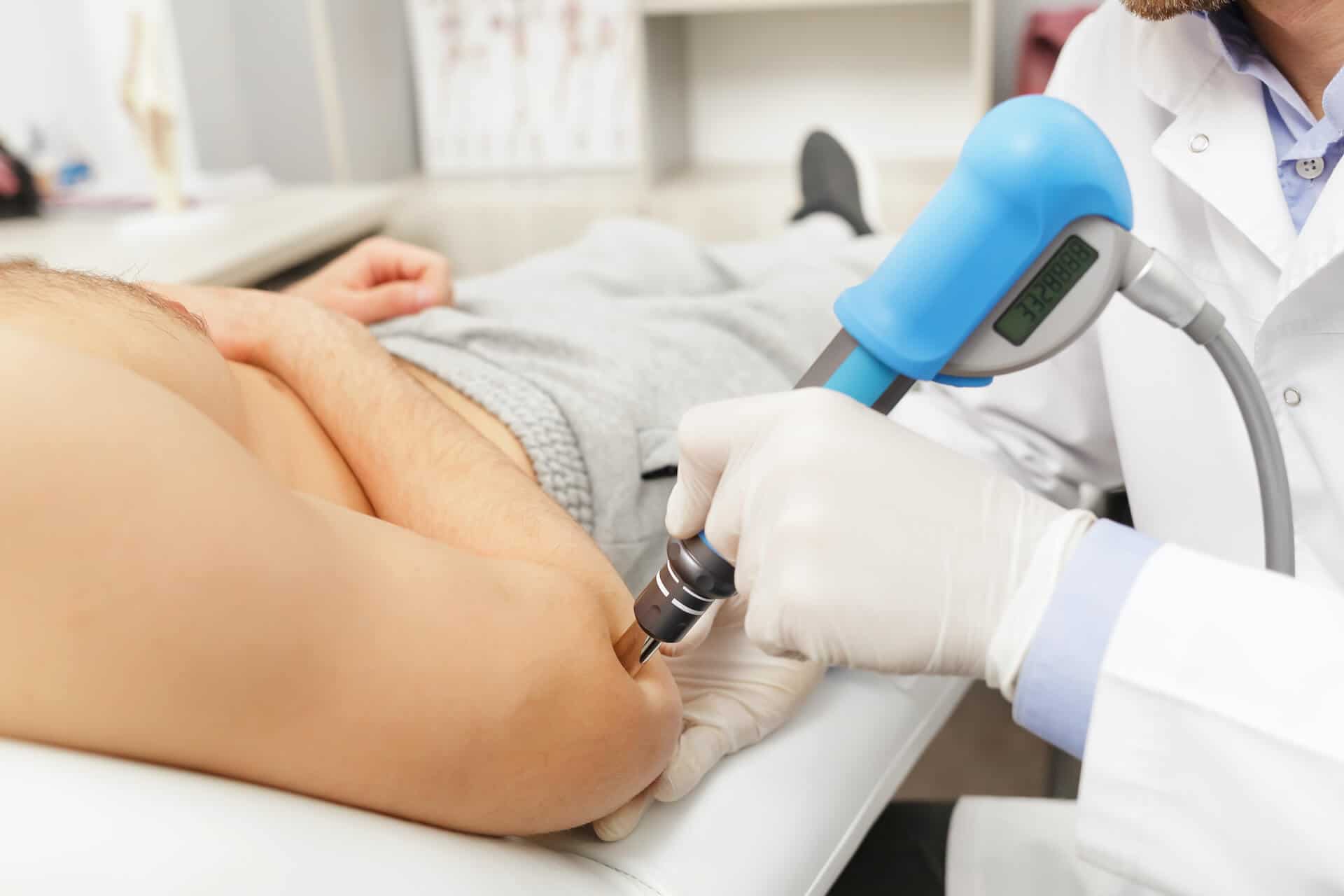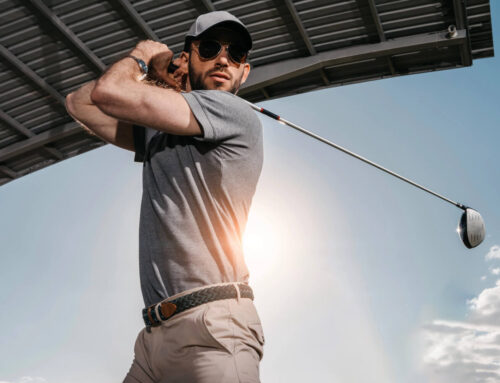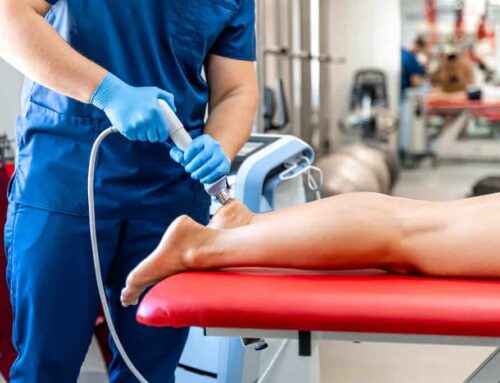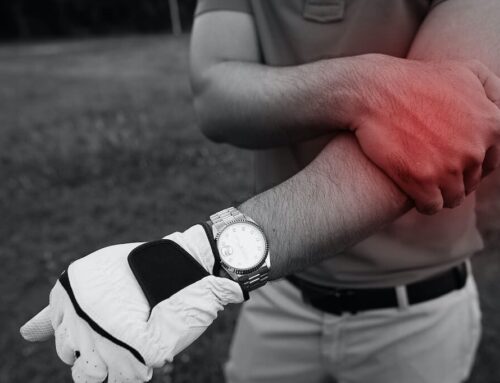Living with elbow pain can be one of the most frustrating things for anyone who wants to stay active and live a normal life. After all, even if you can grit your way through the stubborn pain when you need to, it can set you back for days or weeks afterwards. What’s even more frustrating is when your elbow becomes aggravated with even the simplest things, like picking up a water bottle or closing your car door.
Two of the most common types of elbow pain are tennis elbow and golfer’s elbow – but what’s the difference? Contrary to popular belief, these conditions don’t only happen to tennis players and golfers, and can actually prevent just about anybody from living an active lifestyle.
Let’s take a closer look at what tennis elbow and golfer’s elbow are, how they’re different, and what you can do to make a full recovery and get back to doing what you love faster.
What is Tennis Elbow?
Easily one of the most familiar conditions for athletes and weekend warriors alike, tennis elbow – also called lateral epicondylalgia – describes pain on the outer side of your elbow along the bony bump (called your lateral epicondyle) and the tendons that attach to it. Although it’s commonly called tennis elbow, you don’t actually need to play tennis to have this condition.
The common symptoms of tennis elbow include pain with gripping or extending your wrist (bending it backward), weakened wrist motion, and sensitivity to pressure on the bony bump on your outer elbow. If you’re dealing with tennis elbow, you’re probably frustrated by how stubborn these symptoms can be, and how much they interfere with your ability to enjoy sports and exercise, get your work done, or just go about your daily life.
More often than not, tennis elbow happens because of deconditioning or weakening of the tendons of your outer forearm, increased tendon stress due to muscle imbalances or maladaptive movement patterns, or just too much activity in a short period of time. Another commonly missed cause of tennis elbow is core weakness, which can lead to altered muscle activity in your arms and increased elbow stress during activities like swimming, golf, or racket sports.
What is Golfer’s Elbow?
Perhaps just as common as tennis elbow, albeit not as well known, is golfer’s elbow – also called medial epicondylalgia. Golfer’s elbow describes pain on the inner side of your elbow along the bony bump (called your medial epicondyle) and the tendons that attach to it. You probably guessed by this point, but you don’t need to play golf to experience this condition.
Similar to tennis elbow, the common symptoms of golfer’s elbow are pain with gripping or flexing your wrist (bending it inward), weakened wrist motion, and sensitivity to pressure on the bony bump on your inner elbow. Golfer’s elbow can make you think twice about picking up weights at the gym, cooking a nice meal for dinner, and even carrying your luggage at the airport.
Golfer’s elbow tends to happen for the same reasons as tennis elbow: deconditioning, faulty movement, or increased stress that’s impacting the tendons of your inner forearm. Core weakness can also play a major role with golfer’s elbow, leading to excess elbow stress during arm movements like swinging, carrying, and pitching.
Okay, having a basic understanding of tennis elbow vs. golfer’s elbow is a great starting point for making a recovery, but you’re in pain and need some real answers to work with. Let’s dive in.
What Treatments Actually Work for Tennis and Golfer’s Elbow?
By this point you’ve probably tried some of the basics for your elbow pain: stretches, heat and ice, pain patches, and even medication. The issue with these treatments is that they generally provide short-term relief, which can be helpful, but the lack of long-term results will lead you to feeling frustrated by your lack of progress.
But maybe you’ve taken it a step further and seeked help from a professional, yet still didn’t get the results you wanted and left more frustrated than you arrived. A common issue with professional treatment for tennis and golfer’s elbow is simply focusing on the elbow – which can get short-term relief – and skipping a comprehensive analysis that looks at your wrist, shoulder, core, posture, and movement patterns to establish the root cause of your elbow pain. Keep in mind that you didn’t “fail” PT in this scenario, PT failed you.
To get lasting results for your elbow pain and return to your favorite activities, you’ll need to take a holistic approach to your condition and focus on targeted exercises that address your weak areas, movement training that helps you correct movement patterns that are putting more stress on your elbow, and a gradual volume loading plan to takes you from pain with light movement to confidently maxing out your performance.
In addition to movement-based treatments, conditions such as tennis elbow and golfer’s elbow respond especially well to regenerative physical therapy treatments like shockwave therapy and extracorporeal magnetotransduction therapy (EMTT), which support your body’s natural healing process and help injured or irritated tendons heal faster.
Do I Need to Stop Exercising?
Living with elbow pain is hard enough, but feeling like you need to stop exercising or playing sports while you’re recovering from your tennis elbow or golfer’s elbow can lead to a cycle of frustration and disappointment. In some cases, you may have even been told that you need to completely stop doing the things you enjoy to have a chance at recovery. At DPT, we believe there’s a better way.
Although modifying the activities that are making your elbow pain worse is an important part of your recovery, you don’t need to stop exercising or playing sports entirely to get the results that you want. In fact, we believe that you should stay active during your recovery to help you maintain the progress that you’ve worked so hard for and prevent deconditioning that can actually slow down your recovery.
Working with one of our movement specialists at DPT means getting coaching to guide you through your symptoms, help you correct the habits that are feeding into your tennis or golfer’s elbow, and optimize the effort that you’re putting into your recovery from elbow pain. That means no more wondering what to do or why you’re doing it – just an action plan with real results!
Getting The Help You Need at DPT
Our team of specialists at The Doctors of Physical Therapy are leading experts in the diagnosis and treatment of tennis elbow, golfer’s elbow, and other conditions that often go along with them. When you work with one of our expert therapists, you’ll get measurable, meaningful results for your elbow pain that can get you back to feeling and performing your best.
What sets your care team at DPT in Scottsdale, AZ apart from the rest is premier care from start to finish, including detailed assessments where we get to know you and your needs, personalized care plans that work with your lifestyle (not against it), research-backed exercise, and regenerative physical therapy modalities to support your body’s natural healing process.
Living with tennis elbow and golfer’s elbow can be a major challenge, but you can finally start seeing the results that you’ve been waiting for, beat your nagging elbow pain, and enjoy your active lifestyle again with the help of our team of specialists at DPT. Many of our patients experience elbow pain relief in as little as a few weeks with a combination of the right movements and our clinically proven EPAT shockwave therapy, and so can you!





